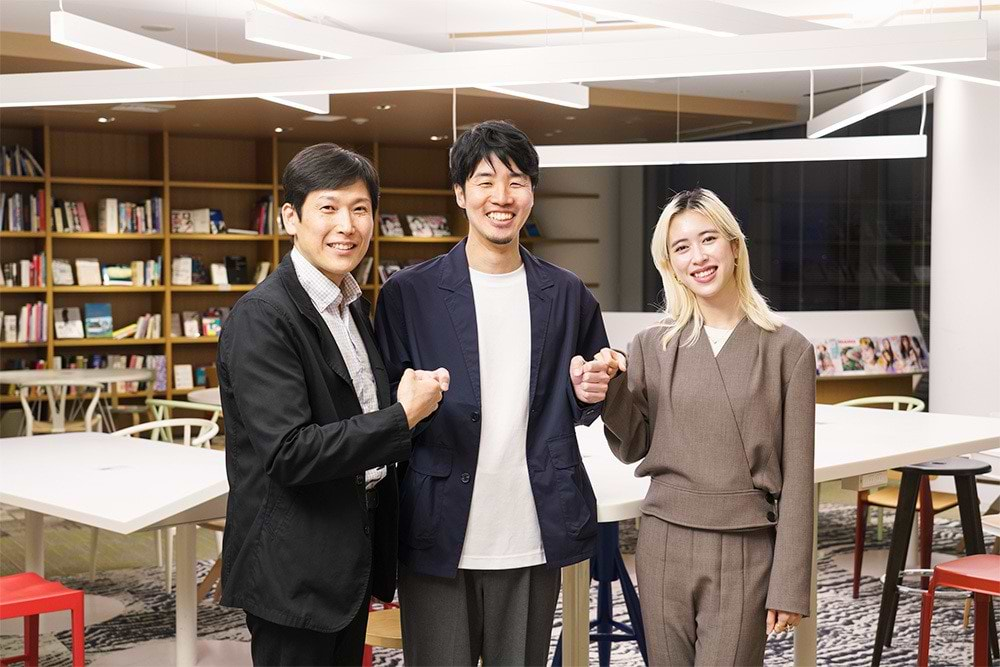
Data Clean Rooms (DCR), offered by the leading platform provides, provide an analysis environment indispensable in the era of data marketing.
This article features “Kizuna-driven Marketing,” a fan winning scheme Suntory is carrying out from a long-term perspective.
We interviewed Satoshi Terada, in charge of overall digital marketing at Suntory Holdings Limited, Yasuhito Kaizuka from Dentsu Inc., who is working on “Kizuna-driven Marketing” along with Suntory, and another Dentsu Inc. employee, Yoyo Ma, who is acting as a liaison with the platform providers offering DCR.
Utilizing DCR to work on “Kizuna-driven Marketing” and bond with individual customers
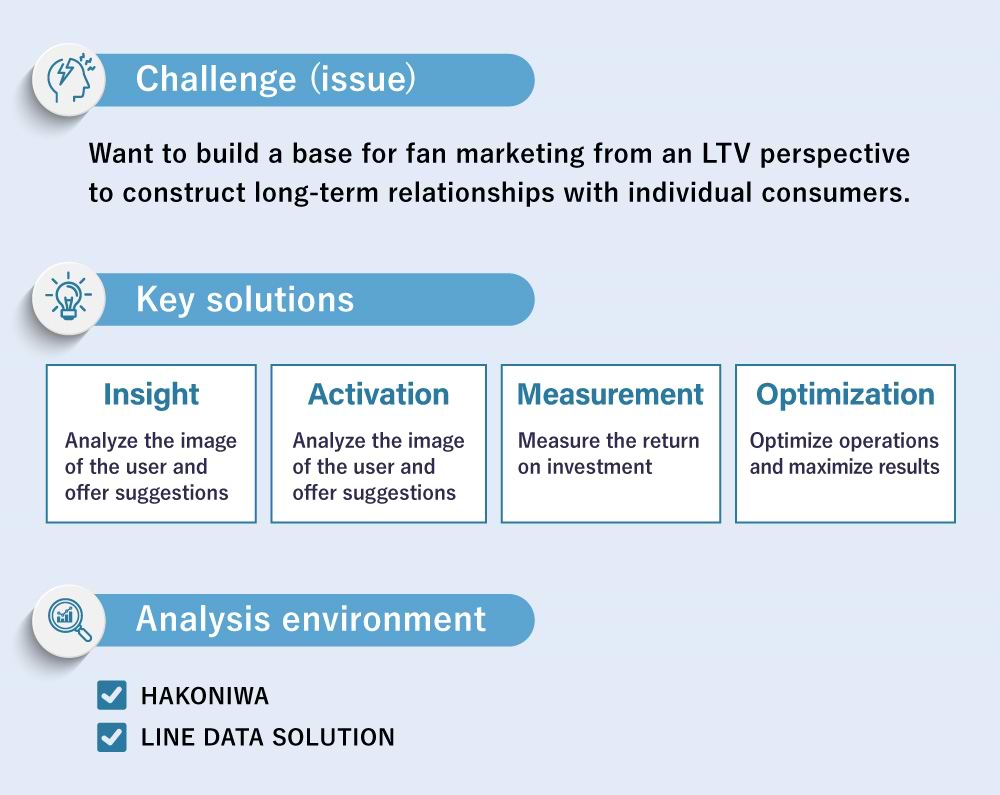
──What does Suntory’s “Kizuna-driven Marketing (KDM)” entail?
Terada: Broadly speaking, it is our initiative to enlarge Suntory’s fanbase throughout the world. It is intended to visualize relationships with various consumers from an LTV (lifetime value) perspective, thus enhancing the quality of internal decision-making and consequently, winning fans with long-term loyalty and deepening relationship with them.
How does Suntory’s “Kizuna-driven Marketing” work?
It serves as a marketing framework which aims to increase the number of Suntory fans throughout the world. Having begun work on analysis based on multiple data infrastructures along with dentsu in 2021, Suntory created the model for visualizing Kizuna (meaning “bonds” in Japanese) with fans using machine learning and is utilizing IDs to deepen relationships with individual customers.
──What were some of the challenges you faced that led to the creation of this initiative?
Terada: We at Suntory had always aimed to build relationships with customers. We were also facing a longstanding challenge – achieving a good balance between long-term branding and short-term sales performance.
I have been working on branding ever since being assigned to advertising soon after I joined Suntory. Branding measures do not directly lead to day to day sales, and it was difficult to visualize their outcomes, which left me feeling frustrated.
Some would say that long-term branding is difficult for daily consumer goods manufacturers. Regardless, I want Suntory to be recognized as the company consumers can rely on the most, precisely because it offers products they use on a daily basis.
One day, Mr. Kaizuka’s team suggested we make this a reality by utilizing cutting-edge technology. We decided to work with them on advancing marketing by visualizing our relationships with individual customers on the basis of IDs.
──Dentsu is working on the initiative as your partner. Could you tell us about each of your roles in the KDM project, respectively?
Terada: As a representative of Suntory’s overall ideas of the company’s challenges, I inform Mr. Kaizuka’s team of what we would like to achieve. In a way, I “translate” Suntory’s desires into objectives achievable with our current technology and connect to various departments within the company.
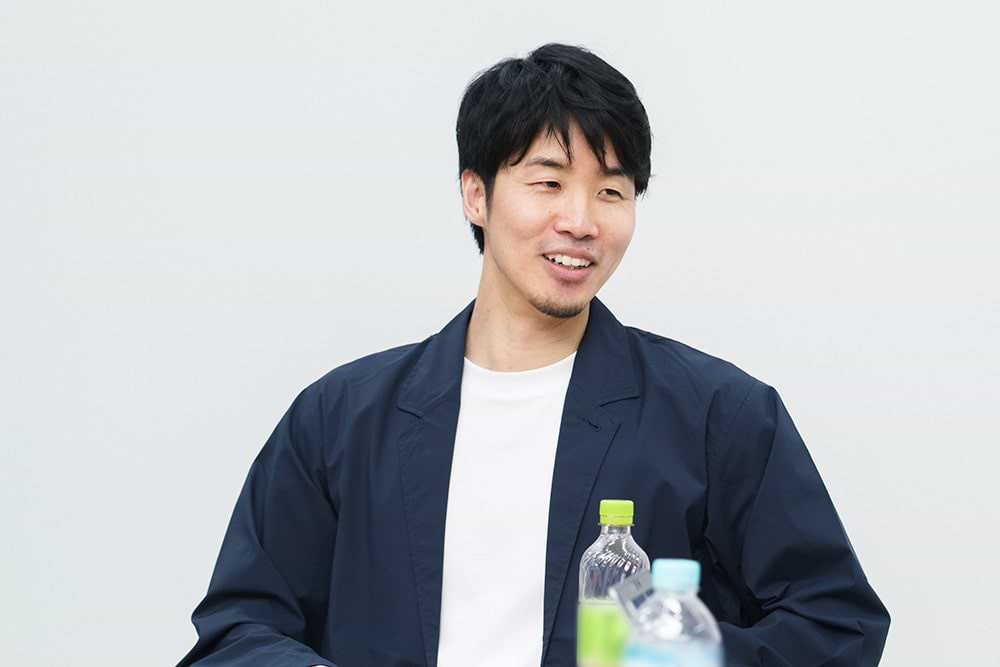
Kaizuka: We are on “active duty,” using the challenges raised by Mr. Terada as the basis on which to formulate hypotheses and analyze data together with Suntory’s team.
However, our goal is not to do digital marketing or use DCRs. Rather, it is to build a relationship that will turn Suntory into a brand loved by even more consumers. Our marketing aims to maintain a virtuous cycle of sales and growth, and we always try to remain consistent with this approach.
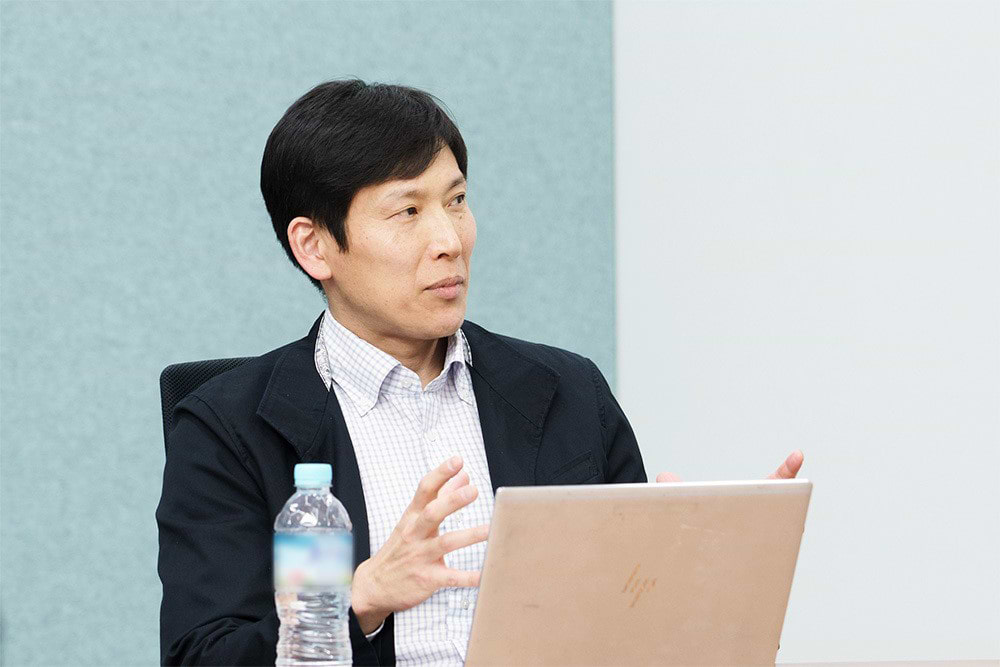
Ma: I am in charge of supporting data utilization and solution development, including DCRs, to help clients solve issues. Working with the platform providers and data holders constituting the base of KDM, including Yahoo and LINE, I consider what kind of data would help clients, and I propose new data infrastructures and utilization according to clients’ goals.
Recently, I “extended” the fan management system based on the HAKONIWA infrastructure, the joint analysis project using the data of Yahoo and Dentsu, to include LINE DATA SOLUTION. This extension will allow Suntory to take a broader view of its contact with consumers and build up relationships.
| Note: | The data that Yahoo! and LINE acquire/use is limited to information approved for use by users. |
|---|

──There are various tools and methods for Customer Relationship Management (CRM). What makes KDM unique?
Kaizuka: The most significant aspect is the fact that IDs are used for creating medium- to long-term relationships with consumers in DCRs where a variety of data can be analyzed without identifying individual consumers.
The driving force behind this initiative is our desire to build continuous customer relationships based on mutual trust that go beyond short-term purchasing decisions, while respectfully handling IDs as identifiers of people with individual behaviors and emotions. This is quite a unique approach.
Ma: From the perspective of someone utilizing DCRs in their regular work, in the case of clients focusing on daily consumer goods, DCRs tend to be used for verifying and assessing the results of individual advertising measures to determine whether or not they have contributed to subsequent purchases. Of course, one of the strengths of DCRs is that they can visualize and assess the contribution to purchases at brick-and-mortar stores in a way that was not feasible before. KDM is unique in the way it utilizes DCRs in a continuous long-term manner.
Additionally, we are now able to grasp consumers’ behaviors, from their awareness of a product to their repeat purchases, by utilizing the DCR infrastructures of multiple platform providers without having to limit ourselves to a single one. I feel that being able to grasp points of contact not limited to advertising measures, via cross-utilization of DCRs, is a cutting-edge approach.
The most important factor that allowed us to realize this was defining and putting into words exactly what makes up a “fan.”
Terada: Although the term “fan” is frequently used in marketing, its meaning differs on a case-by-case basis. Therefore, we began the initiative by defining our shared understanding of the term.
We gradually made our definition clearer through trial and error while exploring what data would be needed to visualize it. This initiative has uniquely allowed us to visualize relationships with fans not just by using nice-sounding language, but via individual IDs, and implementing appropriate measures accordingly.
To avoid getting distracted by data and technology, you need a consistent objective
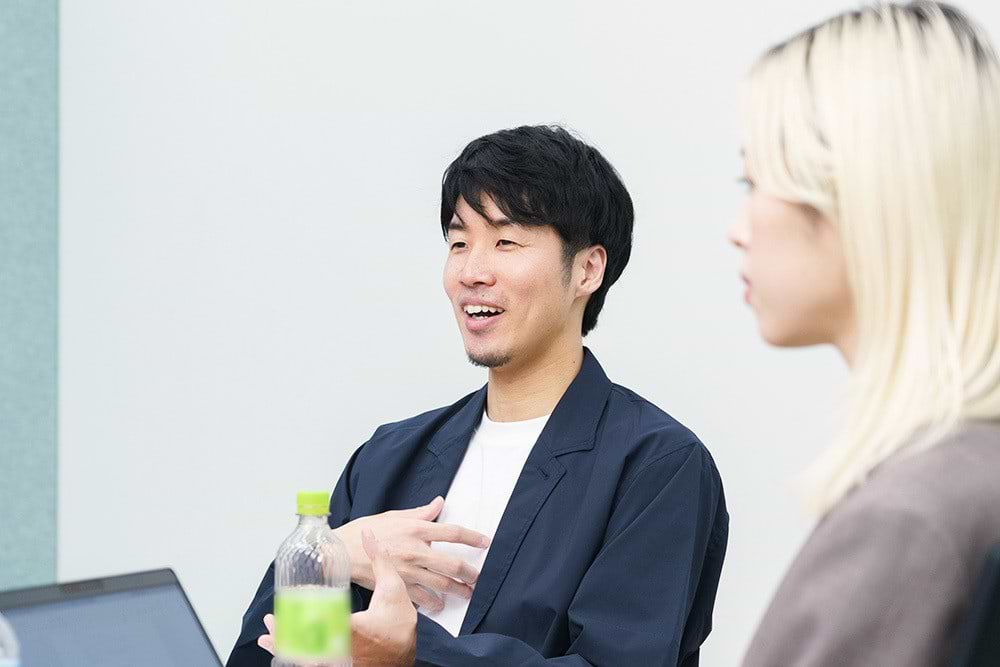
──Digital marketing is often used for increasing efficiency, for example, measuring the impacts of advertising campaigns on sales. However, it is not where KDM originated from. What was it that allowed you to define, visualize and analyze the image of a fan?
Terada: Without a doubt, it was the fact that we used diverse data gained from various points of contact with customers. This enabled us to get a much clearer picture of consumers, understand them widely and three-dimensionally, and stay close to each and every one of them.
Ma: DCRs instantly allowed us to use a still wider range of data. We can use the data owned by the platform providers, the data holders working in partnership with us, and of course, Suntory’s own first-party data, as well as dentsu’s People DMP awareness and television viewing data. This has allowed us to get a much clearer image of each individual consumer.
However, I don’t necessarily mean to imply that the more data there is, the better. We had to go through a process of trial and error repeatedly until we knew which data to use and how to utilize it so that we can better understand customers’ thinking.
Terada: There is already a lot of customer data gathered from various different surveys. However, how people behave is not always consistent, is it? Looking back on my own actions, sometimes I wonder why I bought something the previous day (laughs). In this sense, even purchase data only reflects one single aspect of a person. Regardless, we still sometimes end up analyzing people only based on their purchases. In KDM, we were able to get a clearer and more realistic image of people by obtaining data from a broad range of contact points with customers.
Ma: By obtaining a clearer image of a consumer, we were able to take a more appropriate individualized approach. This has helped us deepen our relationships with consumers.
However, if you have too much data to analyze, you may end up doing analysis for the sake of analysis, performing unnecessary verifications. We always try to avoid getting distracted by the data, under the hypothesis that our efforts must lead to resolving Suntory’s challenges and growing the business.
──Suntory has diversified offerings designed to increase the number of fans, and each has its own group of supporters. Under these circumstances, isn’t it difficult to decide what kind of customer to try to increase?
Terada: Following difficult discussions, we concluded that we would try to increase long-time customers. We defined those people who chose Suntory among many competing products as “fans.” We then created a “fan index” that represents a fans’ feelings by utilizing data owned by platform providers and data holders, as well as Suntory’s own data.
Kaizuka: Utilizing this index as the starting point, we constructed a system for utilizing data to assess the degree of the impact of Suntory’s offerings on building relationships with fans.
What we learned from the data was that each of the offerings contributing to an increase in Suntory fans, such as SUNTORY Presents Beethoven's 9th with a Cast of 10,000 and the baseball event “Suntory Dream Match,” had distinct characteristics in terms of the kind of person it would turn into a Suntory fan as a result of its content, and their subsequent purchasing behavior.
For KDM, based on the hypothesis that it may be effective to maximize the combination of content and “customer DNA,” we would like to further elucidate this mechanism through ID-based trial and error.
Terada: On the other hand, it is important to avoid drawing conclusions through visualized IDs. For example, even if analysis results indicate a person is fond of sports, this only means that that particular analysis has found the person to be fond of sports. We always make sure to go forward with the process under this premise.
Kaizuka: You are referring to a departure from stereotypical definitions and static classification into clusters. After all, those classified into a highly health-conscious cluster one week may end up eating and drinking excessively the following week (laughs). DCRs are also characterized by their active grasping of instantaneous changes in interest. They are very effective for constructing a good relationship with customers.
Ma: The data and functions that can be used in DCRs are updated day by day. We finetune and evolve KDM accordingly so that we can improve our understanding of consumer behavior.
――Do you put more emphasis on the acquisition of new customers or the enhancement of the LTV of existing customers?
Terada: We don’t really differentiate between new and existing customers. It may sound a little overdramatic, but we want to be loved by everyone, every single person, and we understand the degree of fan-ness varies by person, ranging from 0 to 100.
Kaizuka: The discrimination between new and existing customers does not really fit beverages, that is, products routinely consumed in everyday life. It is important to be free from this dualism of “fan or not a fan” when building relationships with long-term customers. There is a gradation in their feelings toward Suntory that ranges between the two, in reality. We would like to manage customer relationship building by visualizing this gradation quantitatively.
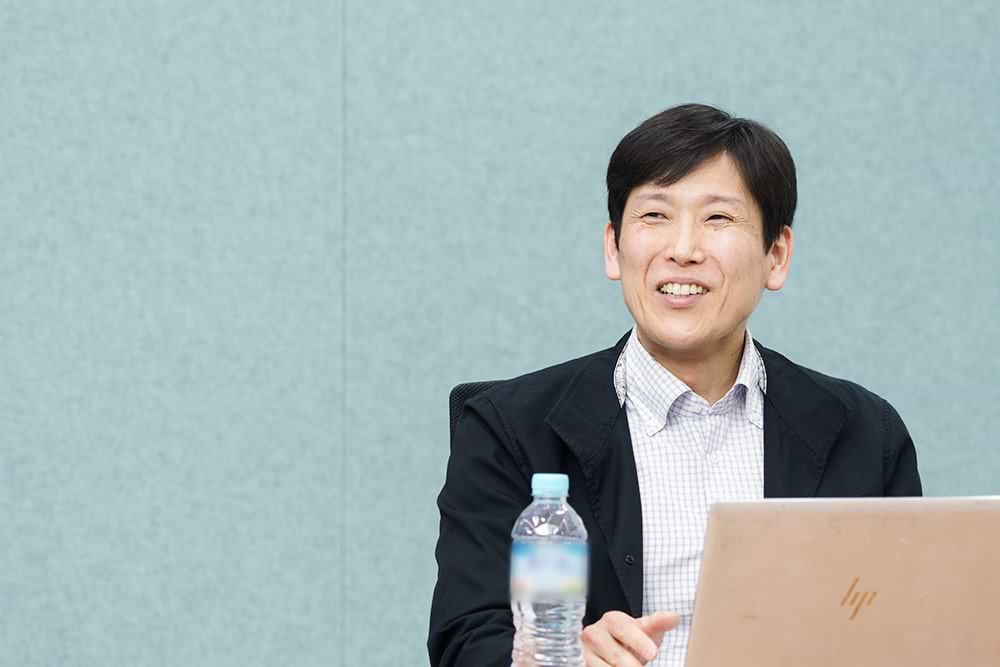
Terada: The Japanese population is decreasing, and when taking consumers’ free time into account, you could say that there are various activities competing for it. Will they to choose to have a drink or watch a one-hour drama on Netflix? They have so many different options, and Suntory is aiming to create an environment where our products are part of many people’s everyday lives. Thus, we are exploring ways to increase people’s “fan-ness” while actively approaching all consumers.
――What do you value when building relationships with fans?
Terada: I try to maintain the aspects unique to Suntory. Ever since joining the company, I have always been told that what Suntory does is creating culture, rather than selling products to customers. To assist this process, I convey our analysis results internally as feedback to help enrich customers’ lives. I emphasize linking these result to concrete actions.
Ma: As part of fulfilling our true objective that Mr. Terada just described, I emphasize thinking about which data can help Suntory achieve this objective together with platform providers. As he mentioned, it is important to take concrete action, and our implementation has reached the stage where we are capable of approaching consumers by measuring the subjects of various fans’ interest, as well as the degree of their interest using their “fan-ness” as an index.
Kaizuka: Engaging in such a cutting-edge initiative, we run the risk of confounding the means with the ends even when we try to be careful. For example, we may concentrate too much on our efforts to evolve the KDM project. To avoid this, we put the emphasis on our contributions to the decision-making aimed at increasing the number of customers who will continue showing their love for Suntory over a long time period.
When I made the first proposal, I only talked about deepening relationships with consumers continuously to increase fans, without recommending the use of DCRs at all. As long as we can realize this goal, we don’t necessary need to rely on KDM. I think we should also feel free to change content flexibly if it helps us achieve our goals.
Terada: Indeed, KDM itself has been changing drastically over the last three years. Although we refer to it as marketing, I don’t think KDM is limited to just marketing. I rather think it could serve as a base for the management of the Suntory organization. From this perspective, the methods and purposes of using the data differ from mere marketing.
Do not end with analysis, give feedback within the company to stimulate action

──How do you share visualized fan data internally?
Terada: There are two things we emphasize when sharing data internally. First, we narrow down data into essentially important elements and translate them so that everyone can understand them before showing them. You would be confused if someone showed you data consisting of 100 PowerPoint slides, wouldn’t you? (laughs)
Second, we make sure there is clear action, that is, how we can change in response to analysis results. In a broader sense, relationships with other Suntory employees involved in various businesses may be considered part of KDM. For this, it is important to share our vision of achieving a good balance between a long-term increase in fans and short-term sales performance, and then, to involve others and draw them into our story.
Kaizuka: Internal measures to implement DX and new technology into an organization often serve as the key driver. While Mr. Terada takes full charge of these efforts, we at dentsu always try to ensure our results are understandable and actionable. We do still end up making 100-slide decks for explanations sometimes though…
Ma: From the perspective of working on the backend, we try to produce indices that are as simple and easy to use, visualize and understand as possible so that many departments and employees can use them internally. Hopefully, the indices will become something like a compass for them.
In addition, a certain level of scale and precision is needed, since we have to show employees that our indices and data can be relied upon. KDM is based on machine learning, and its precision will not be adequate if its learning data is insufficient. Conversely, if we put an excessive focus on precision, the number of people who can manage it will be insufficient, and the desired impact will not be achieved. We always keep the balance among reliable precision, ease of understanding for implementation, and a scale that permits assessment in mind while experimenting.
Terada: We should avoid becoming complacent. Instead of making employees use KDM data, I would rather try to create and maintain, along with dentsu, methods that are easy to use and handy for employees in charge of projects, and which allow them to visualize relationships with customers, thus bringing about value.
I receive very positive feedback whenever I share our efforts with my colleagues. I believe our approach is the right one because it is helping highlight Kizuna and Suntory’s philosophy and is gradually leading to concrete action.
Ma: Recently, Suntory hosted an in-person event . We visualized whether participants’ love for Suntory grew after experiencing the event and performed a deep analysis into further enriching subsequent events to grow attendees’ love for Suntory. Through this fan management scheme, we successfully assessed the impacts of an offline event, which are usually hard to grasp.
Kaizuka: Unfortunately, there are no one-size-fits-all perfect solutions for quantitative fan management measures. Suntory’s employees are eager to try various methods if they can help them even a little bit and enhance the precision of decision-making even slightly. This attitude has helped them implement cutting-edge initiatives. I am deeply impressed by their ability to always maintain their own Suntory worldview, which helps them avoid being distracted by technology and data while utilizing new tools.
Terada: Thank you. It is my hope that we will be able to enrich our customers’ lives, even if only by 3 percent or so. Improving our decision-making just a by a few percentage points and helping make a difference is what Suntory is all about.
Kaizuka: Through such seemingly humble efforts, precision is improved little by little. I believe this will prove immensely valuable in the long run. We are constructing infrastructure in the form of KDM that will serve as the foundation for a system that shifts the relationship with customers into data-driven one.
──You are doing something unprecedented, no doubt going through lots of trial and error.
Terada: Yes, and we require lots of diverse viewpoints. So, our relationship with the dentsu team is not one of simply appraising their proposals. Dentsu’s team and ours are working in unison, trying to achieve the same goal. I spend more time talking to Mr. Kaizuka and his team than I spend talking to my own family (laughs).
Kaizuka: There are no correct answers in what we do. Rather than creating and presenting proposals, we share extracted data to estimate the causes and discuss the direction of our hypotheses together. We are working as one team. Of course, we often receive ideas and findings from Mr. Terada. We are now much quicker to act and take on new challenges than we were in the beginning.
Ma: Suntory’s philosophy “Yatte Minahare*” really helps us. Their proactive attitude also helps platform providers discover new applications.
By sharing Suntory’s feedback with platform providers, we help create new conversations such as, “What about using data like this?” and “Would this function help you?” I would like to continue strengthening our cooperation with platform providers and data holders to meet many different needs.
Terada: We at Suntory have our “Yatte Minahare” philosophy – even when we fail, we never give up and keep taking on new challenges. I always ask the team to work twice as quick even if their precision is halved as a result. In this field, you never know until you try. By proactively taking on challenges, we have accumulated knowledge and built various processes.
Kaizuka: I think the process of discussing the hypotheses derived from data is very important. Through repeated trial and error, we have accumulated experience in finding ways to increase our fans in a science-based manner using IDs, which has become one of Suntory’s precious intangible assets.
Terada: As Mr. Kaizuka and Ms. Ma said, KDM does not have to be limited to the digital or marketing realm despite being a frame of digital marketing. I share this view with dentsu, which is reassuring.
Kaizuka: Suntory has a unique perspective and is currently working on the next-generation of bond building (fan management) by utilizing DCRs from an LTV perspective and the data-driven marketing of a daily consumer goods manufacturer, efforts unique to Suntory, one of the companies leading marketing in Japan.
Working on KDM, every day I reaffirm my understanding of Suntory as a company that wants to satisfy and move customers, deepening the bond with them. As a consumer myself, I feel as though my own bond with Suntory has grown more than ever.
――Thank you for your time today!
| *: | “The spirit of ambition to dream big, take challenges, and never give up” (refer to: https://www.suntory.id/en/our_philosophy/yatte_minahare/) |
|---|
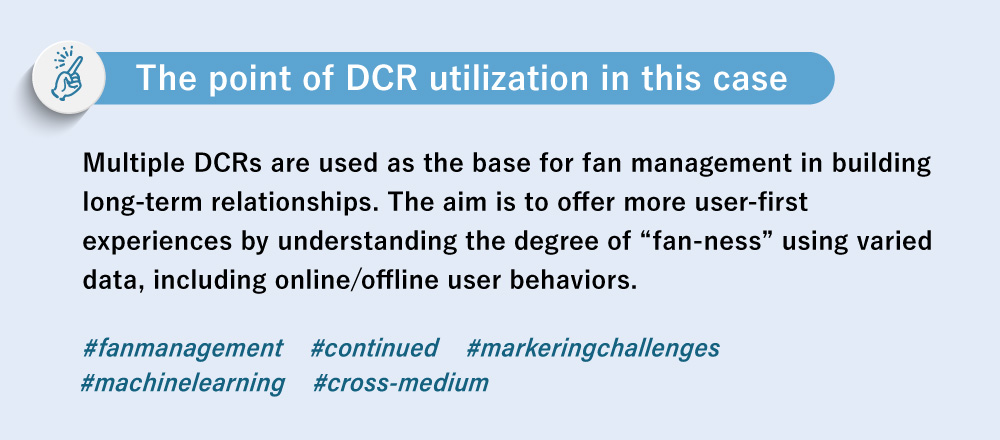
Related Link
Working with Suntory on “Kizuna-driven Marketing” with an LTV Mindset (Japanese language only)
